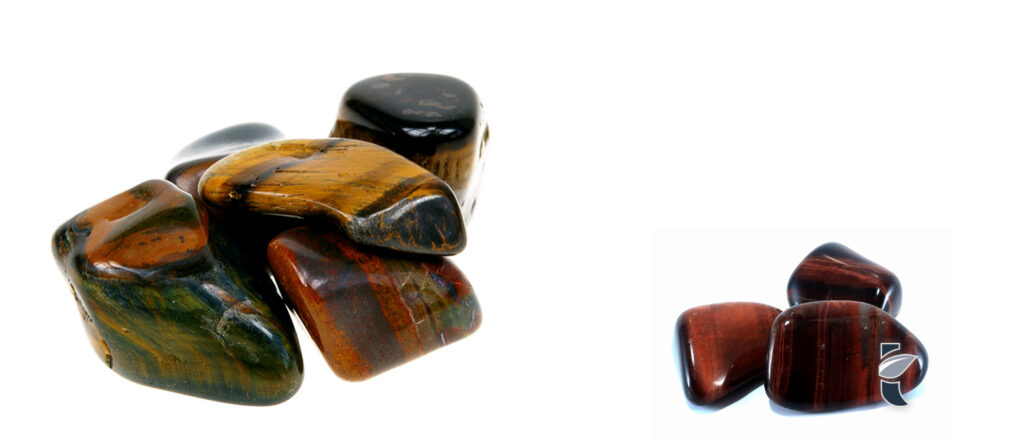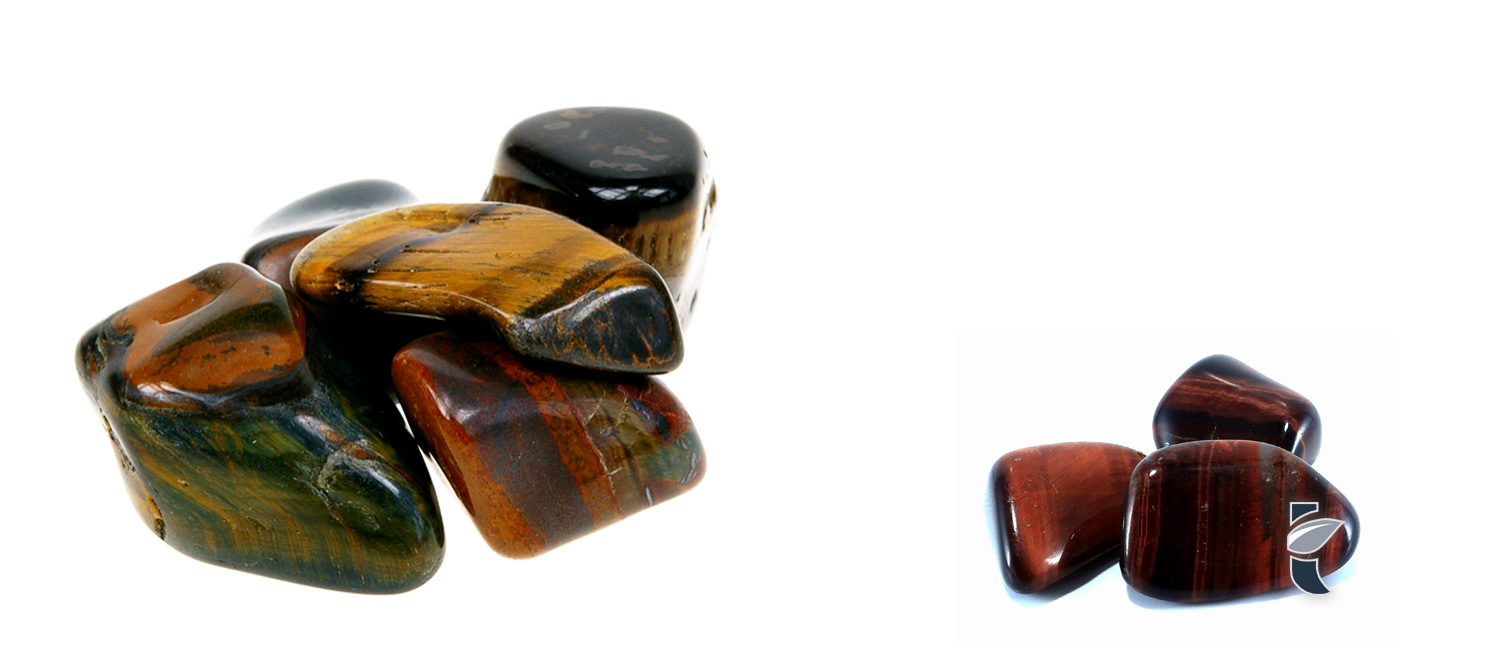
Hawk’s Eye: Unveiling the Mystical Properties and Geological Origins of Oeil de Faucon
Hawk’s Eye, also known as Oeil de Faucon, is a captivating gemstone that has fascinated cultures for centuries. This striking stone, with its shimmering bands of blue-gray to blue-green hues, evokes the keen vision of a hawk soaring through the sky. Beyond its aesthetic appeal, Oeil de Faucon is believed to possess potent metaphysical properties, making it a sought-after stone for those seeking clarity, protection, and insight. This article delves into the geological origins, physical properties, historical significance, and purported metaphysical benefits of this intriguing gemstone, providing a comprehensive overview for both gemstone enthusiasts and those curious about the world of crystals.
Geological Formation and Composition
The formation of Oeil de Faucon is a fascinating geological process that begins with the mineral crocidolite, a fibrous blue asbestos. Through a process called pseudomorphism, the crocidolite is gradually replaced by silica (silicon dioxide). This replacement process preserves the fibrous structure of the original crocidolite, resulting in the chatoyancy, or “cat’s eye” effect, that is characteristic of Oeil de Faucon. The presence of iron within the silica matrix is responsible for the stone’s distinctive blue-gray to blue-green color. Over millions of years, geological forces further transform the material, creating the polished gemstone we admire today. Key deposits of Oeil de Faucon are found in regions like South Africa, Australia, and India.
Physical Properties and Identification
Oeil de Faucon is a relatively hard and durable gemstone, with a Mohs hardness of around 7.0. This makes it suitable for use in jewelry, although care should still be taken to avoid scratches and impacts. Its density typically ranges from 2.64 to 2.71 g/cm³. The most distinctive feature of Oeil de Faucon is its chatoyancy, which manifests as a shimmering band of light that appears to move across the surface of the stone when it is rotated. This effect is caused by the parallel alignment of the fibrous inclusions within the stone. To identify genuine Oeil de Faucon, look for this characteristic chatoyancy, along with its typical blue-gray to blue-green color and smooth, polished surface. It is sometimes confused with Tiger’s Eye, which is formed through a similar process but contains iron oxides that give it a golden-brown color. [See also: Tiger’s Eye: Properties and Uses]
Historical Significance and Cultural Beliefs
Throughout history, Oeil de Faucon has been revered by various cultures for its perceived protective and insightful properties. Ancient Egyptians associated the stone with the falcon god Horus, believing it provided protection and enhanced vision. Roman soldiers carried Oeil de Faucon into battle for courage and protection. In many cultures, it was believed to ward off evil spirits and negative energies. The stone’s association with clarity and insight led to its use in divination and meditation practices. Even today, Oeil de Faucon holds a place of significance in modern spiritual and metaphysical communities, valued for its grounding and protective energies.
Metaphysical Properties and Healing Benefits
In the realm of crystal healing, Oeil de Faucon is believed to possess a wide range of metaphysical properties. It is often associated with the third eye chakra, enhancing intuition, psychic abilities, and inner vision. Many believe that Oeil de Faucon can help to clear blockages in the third eye chakra, allowing for greater clarity and insight. It is also said to promote courage, self-confidence, and protection from negative energies. Some practitioners use Oeil de Faucon to ground and stabilize energy, helping to balance emotions and promote a sense of calm. It is also thought to be beneficial for those who struggle with anxiety or fear. Oeil de Faucon is often used in meditation to promote a deeper connection with one’s inner self and to gain clarity on life’s path. [See also: Crystal Healing: A Beginner’s Guide]
Uses in Jewelry and Decorative Arts
The captivating beauty and durability of Oeil de Faucon make it a popular choice for jewelry designers and artisans. It is commonly used to create cabochons, beads, and other decorative elements for necklaces, bracelets, rings, and earrings. The stone’s chatoyancy adds a unique and eye-catching element to any piece of jewelry. Oeil de Faucon is also used in ornamental carvings and sculptures, showcasing its natural beauty and unique patterns. Its relatively affordable price compared to other gemstones makes it accessible to a wide range of consumers. When selecting Oeil de Faucon jewelry, look for stones with a strong chatoyancy and a uniform color distribution. [See also: Gemstone Jewelry Trends]
How to Care for Your Oeil de Faucon
To maintain the beauty and luster of your Oeil de Faucon, it is important to care for it properly. Avoid exposing the stone to harsh chemicals, such as cleaning agents or perfumes. Clean your Oeil de Faucon jewelry with a soft cloth and mild soap and water. Store it separately from other jewelry to prevent scratches. While Oeil de Faucon is relatively durable, it is still susceptible to damage from impacts, so avoid wearing it during activities that could put it at risk. Regular cleansing can also help to maintain the stone’s metaphysical properties. This can be done by placing it in sunlight or moonlight for a few hours, or by smudging it with sage or other cleansing herbs.
Distinguishing Oeil de Faucon from Similar Gemstones
Oeil de Faucon can sometimes be confused with other gemstones that exhibit chatoyancy or similar colors. Tiger’s Eye, as mentioned earlier, is a closely related stone with a golden-brown color. Pietersite, another chatoyant gemstone, can exhibit a swirling pattern of colors, including blue, gold, and brown. Kyanite, while typically blue, does not display chatoyancy in the same way as Oeil de Faucon. To distinguish Oeil de Faucon from these other stones, carefully observe its color, chatoyancy, and overall appearance. Oeil de Faucon typically has a blue-gray to blue-green color and a smooth, shimmering band of light that moves across the surface of the stone. [See also: Identifying Gemstones: A Practical Guide]
The Enduring Appeal of Oeil de Faucon
Oeil de Faucon continues to captivate and inspire with its unique beauty and purported metaphysical properties. From its geological origins to its use in jewelry and healing practices, this gemstone holds a special place in the hearts of many. Whether you are drawn to its aesthetic appeal, its historical significance, or its metaphysical benefits, Oeil de Faucon offers a glimpse into the fascinating world of gemstones and their enduring power to connect us to the earth and to ourselves. Its protective energies and ability to promote clarity make it a valuable stone for navigating the complexities of modern life. As you explore the world of gemstones, consider adding Oeil de Faucon to your collection and experience its unique charm for yourself. This captivating stone, also known as Hawk’s Eye, provides insight into the world around us.

